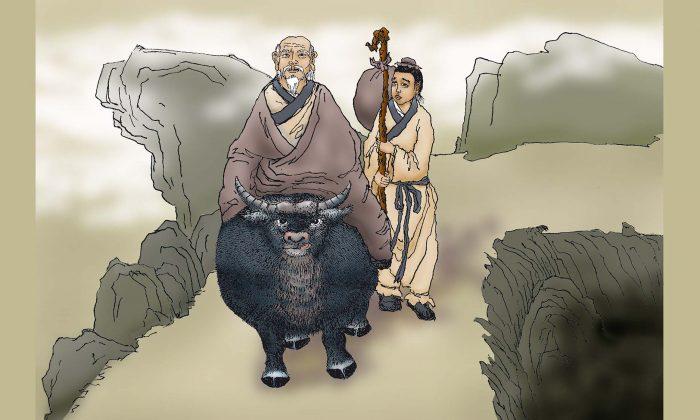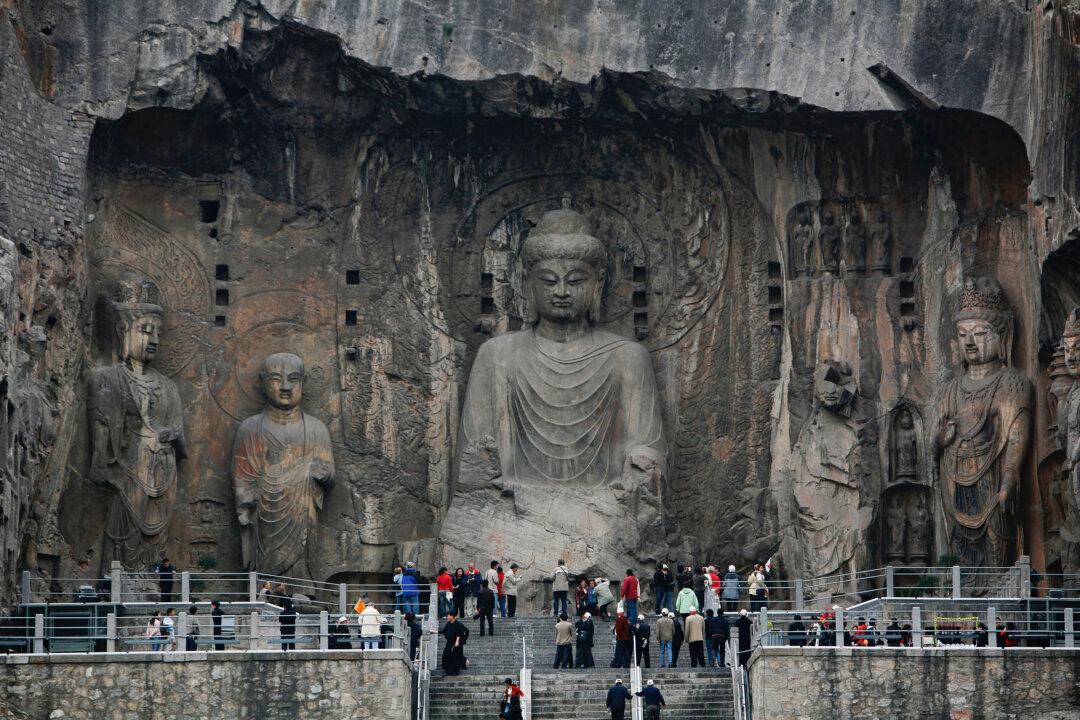In the following, drawn from my e-book, “Talks on Chinese Civilization,” I explore the essence of Chinese culture through the window of martial arts and spirituality.
In today’s China, the material is the focus of the vast majority of people’s attention, yet what allows a civilization to last is its values. I believe that understanding the essence of Chinese culture lies not so much in looking at what it has left to history in a material sense but in a spiritual sense.
A brief examination of the relationship between martial arts and spirituality offers a glimpse into the profound aspects of Chinese civilization.
When it comes to martial arts, many people may think of Bruce Lee’s kung fu or maybe “Kung Fu Panda,” which contains elements of this fighting style. They may even think of the kung fu fights in “The Matrix.” But what is the true essence of Chinese kung fu?
You may have heard this saying: “All martial arts under Heaven originated from Shaolin.” Indeed, the Shaolin martial arts school is widely regarded as the pinnacle of kung fu.
Shaolin Temple, the ancestral temple and birthplace of Zen Buddhism, was founded by Bodhidharma, a Buddhist practitioner. He came to China during the Northern Wei Dynasty and famously spent nine consecutive years in meditation facing the wall of the Dharma Cave. He meditated for so long that his entire image was printed, like a photograph, onto the opposite wall—the illustrations that we see of him today are all based on that image.
Bodhidharma created Shaolin kung fu and left behind the “Yi Jin Jing” and “Xi Sui Jing,” which are books on the internal skills of martial arts.
The sixth-generation successor of Zen Buddhism was named Huineng, who passed away in 713 A.D. during the Tang Dynasty. Huineng passed away at Guo’en Temple in southern China, where it is scorching and humid and where, for example, freshly caught fish spoils very quickly. Huineng’s body, however, remained intact and unspoiled after his death and was transported back to Shaoguan and enshrined in Nanhua Temple—1,300 years later, his body remains unchanged.
This shows that true kung fu is actually a Buddhist spiritual practice that can allow its followers to reach a much higher level of existence.
Of course, in addition to Buddhist martial arts, Taoist schools, such as the Wudang school, rival Shaolin in popularity. Another famous martial arts style, Taijiquan (“Tai-chi”), was founded by Taoist master Zhang Sanfeng.
These examples demonstrate that when authentic martial arts are practiced to the highest level, its practitioners can reach both intangible and unseeable states. The practice thus elevates from mere street-fighting techniques to a Buddhist or Taoist method of internal cultivation.
The same concept applies to how I view Chinese civilization. I do not focus as much on specific material aspects; instead, the essence I speak of belongs to the realm of the metaphysical or the Tao.
Many people consider the Tao to be an extremely abstruse concept, but, in fact, a certain level of spirituality is already deeply rooted in Chinese people’s thinking, manifesting through words and actions. For example, traditionally oriented Chinese often say, “Do not do to others what you do not want done to yourself ”; “The benevolent man loves others”; “A journey of a thousand miles begins with a single step”; “Good fortune follows upon disaster; disaster lurks within good fortune,” etc., all of which illustrate profound Confucian and Taoist philosophies.
The term “philosophy” sounds complex and obscure. However, an online video clip of Bruce Lee sharing his understanding of kung fu during his Hollywood audition in the 1960s can help you understand.
Bruce Lee was an incredible martial artist and athlete, unsurpassed in many ways on a physical level. However, when talking about martial arts, he almost seemed to be discussing philosophy. He held that the highest level of martial arts is comparable to water. Water has no definite form and is thus the most flexible substance in the world. It is strong enough to penetrate stone and impossible to defend against. Being formless, it cannot be grasped, harmed, or fought. Its flexible nature allows it to adapt to any enemy and any situation. These characteristics illustrate the highest realm of martial arts.
Bruce Lee’s understandings parallel the principles of Taoism or the School of Militarism. The founder of Taoism, Laozi (“Lao-Tzu”), said in his famous text, the “Tao Te Ching,”: “There is nothing in the world more soft and weak than water, and yet for attacking things that are firm and strong there is nothing that can match it.”
Eminent military strategist Sunzi articulated a similar principle of successful warfare in his book “The Art of War”:
“Military tactics are like water, for water in its natural course runs away from high places and hastens downwards. So in war, the way is to avoid what is strong and to strike at what is weak. Water shapes its course according to the nature of the ground over which it flows; the soldier works out his victory in relation to the foe whom he is facing. Therefore, just as water retains no constant shape, so there are no constant conditions in warfare. He who can modify his tactics in relation to his opponent and thereby succeed in winning may be called god-like.”
The idea was that, from ruling a country and embarking on military endeavors to individuals’ personal mannerisms and conduct, all aspects should align with the characteristics of water—and kung fu was certainly no exception.
Therefore, although Bruce Lee was a kung fu master, his thinking had become philosophical. He had come to understand the Tao at a certain level within the realm of martial arts.
In fact, ancient Chinese believed that all trades and professions contained the Tao, the Way that is intangible and invisible; that is, all trades could be practiced in a realm beyond the ordinary.
Therefore, the Tao, while seemingly abstract, is in and a part of everything. The ancient martial artists (and, to a certain extent, Bruce Lee) understood this, and perhaps the sort of knowledge they had is not so impossible for us to obtain as well.







